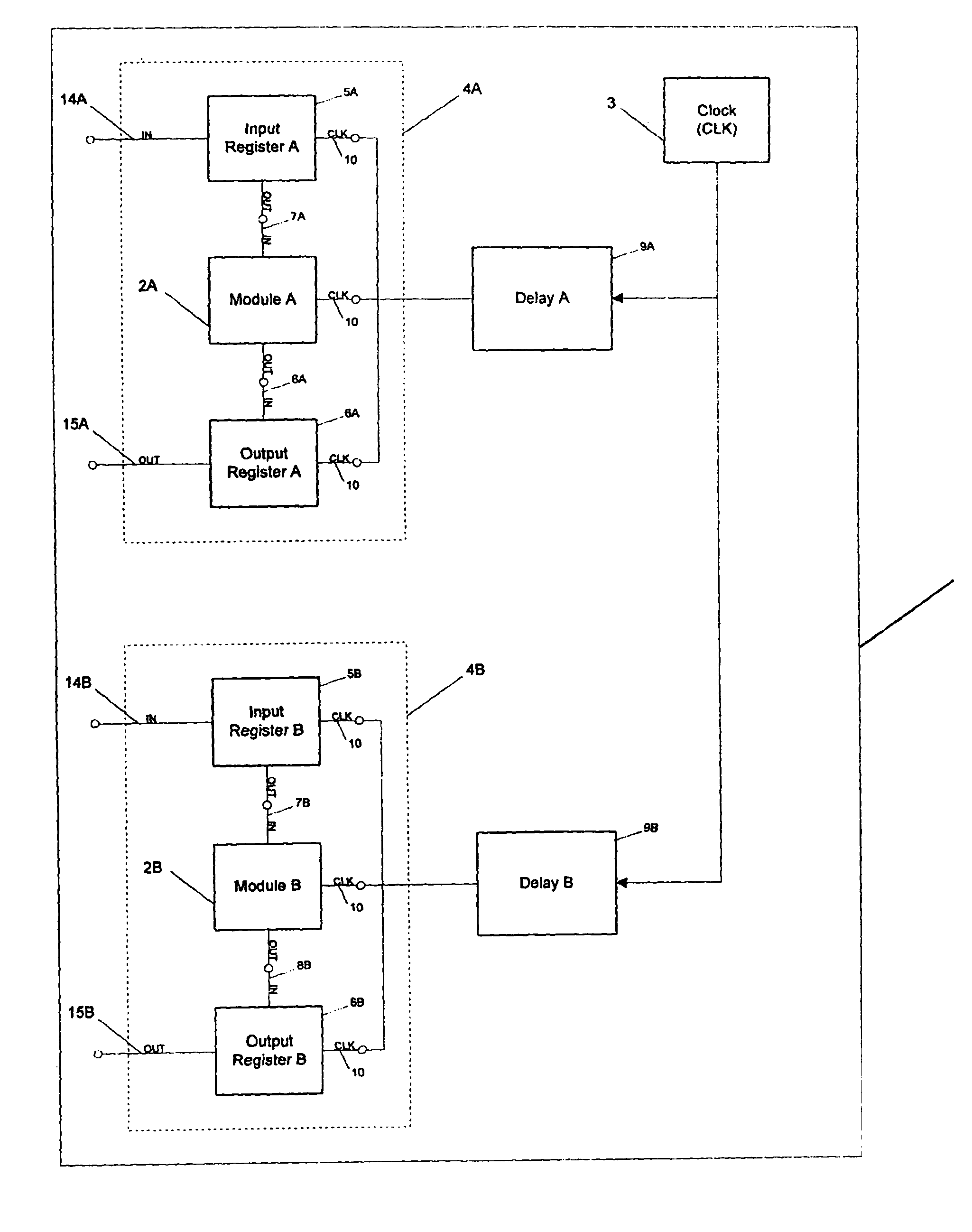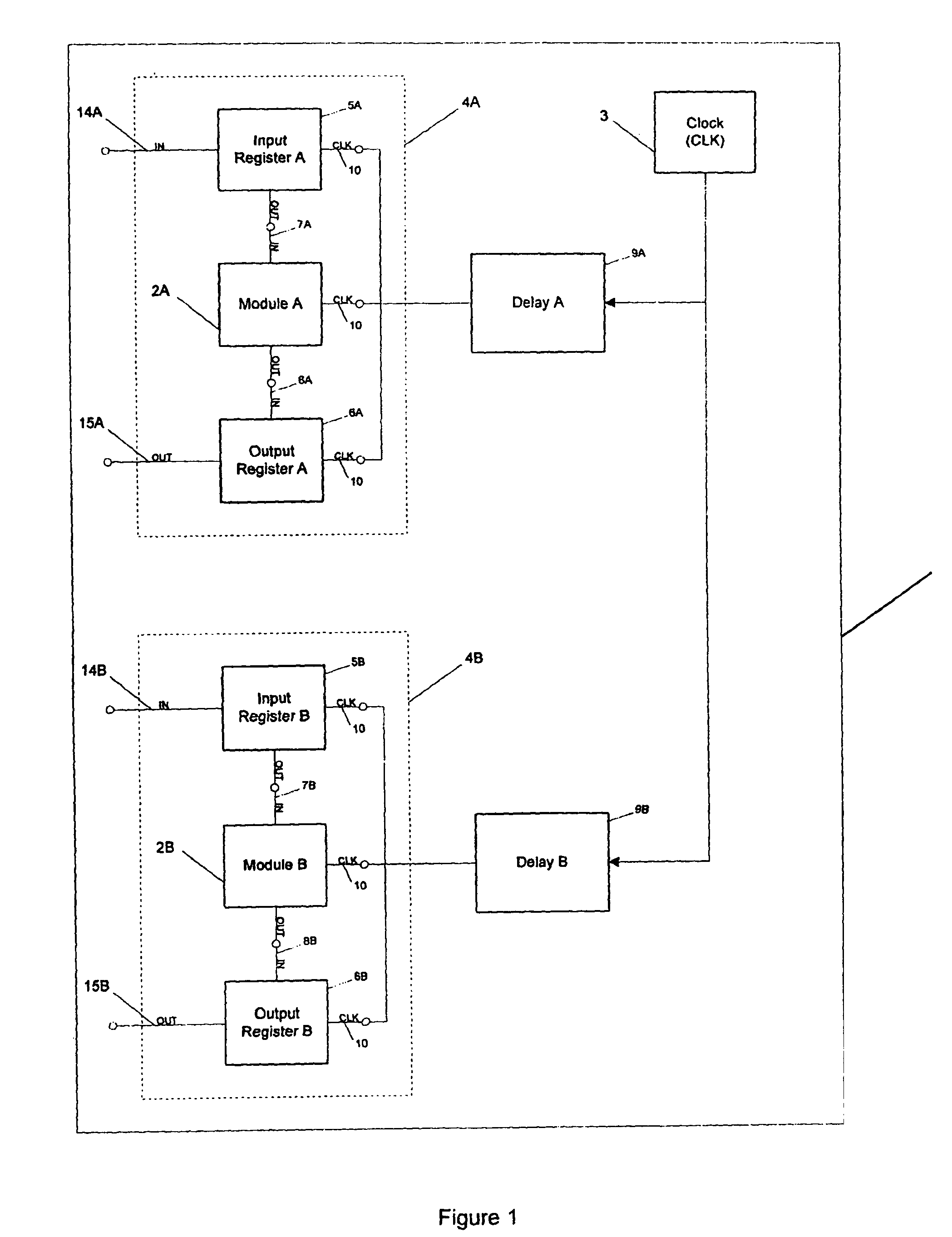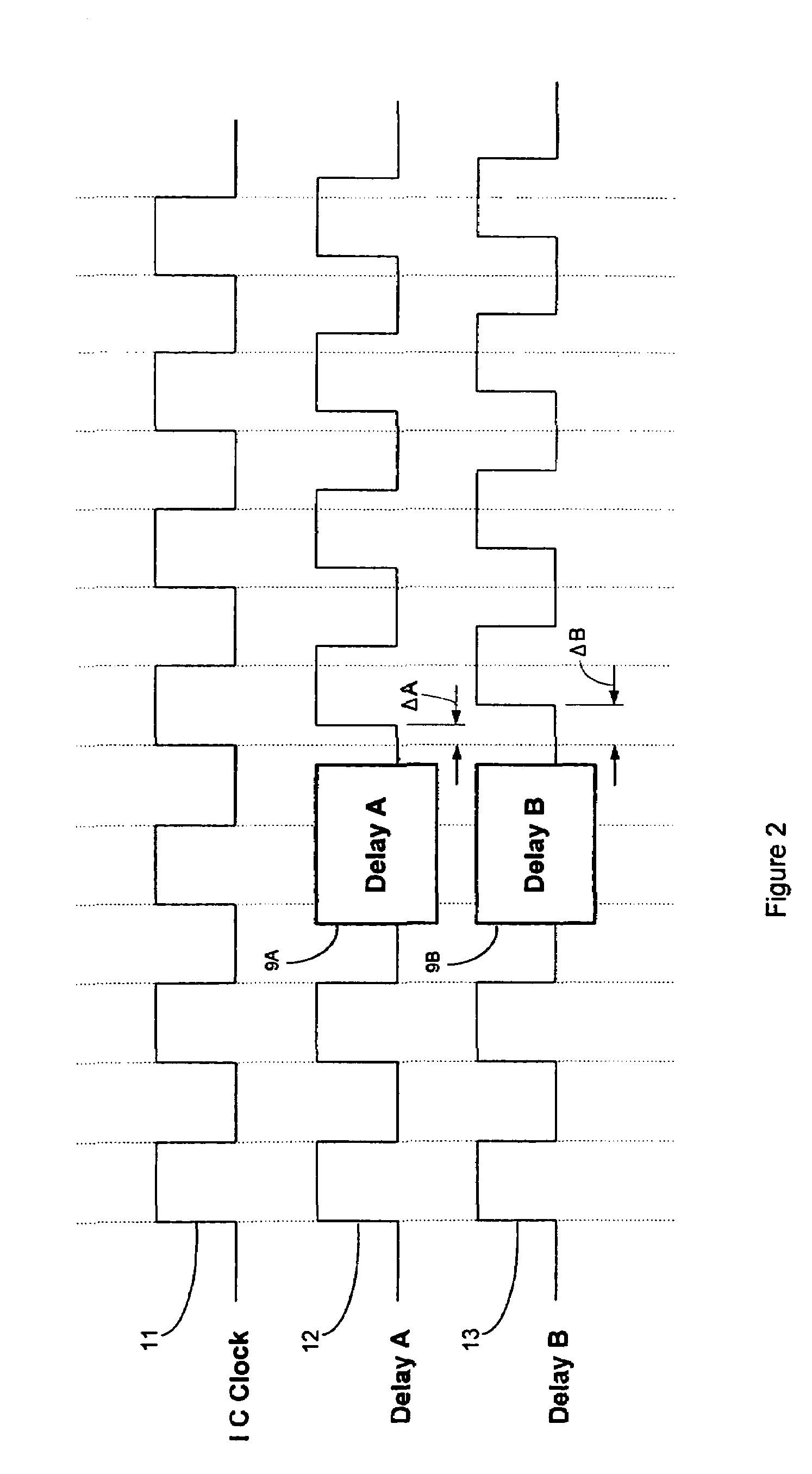Method to reduce inductive effects of current variations by internal clock phase shifting
a technology of internal clock phase and current variation, which is applied in the direction of voltage/current interference elimination, pulse technique, and increase in modification, can solve the problems of large current spikes on the power net of the ic, inductive voltage transients, and current flow consumes electric power, so as to reduce current transitions and minimize inductive voltage transients , the effect of more reliable operation of the i
- Summary
- Abstract
- Description
- Claims
- Application Information
AI Technical Summary
Benefits of technology
Problems solved by technology
Method used
Image
Examples
Embodiment Construction
[0021]In the preferred embodiment of the present invention, the design of an electronic integrated circuit (IC) such as a CPU microprocessor comprises reasonably independent synchronous functional modules as well as a synchronizing clock generator. The modules may include arithmetic logic units, control units or any other suitably separable units. FIG. 1 conceptually illustrates an IC chip 1 with modules A and B (2A and 2B) and on-chip clock 3. During chip design, operational boundaries 4A and 4B are identified around said modules such that binary signals may be processed internal thereto subject to a minimum of interface with the remainder of the IC.
[0022]The exemplary embodiment discloses an IC device having two independent functional modules. The method of the invention can be employed on devices comprising any number of relatively independent and separable circuits without departing from the scope of the present invention. The selection of the proper operational boundaries betwe...
PUM
 Login to View More
Login to View More Abstract
Description
Claims
Application Information
 Login to View More
Login to View More - R&D
- Intellectual Property
- Life Sciences
- Materials
- Tech Scout
- Unparalleled Data Quality
- Higher Quality Content
- 60% Fewer Hallucinations
Browse by: Latest US Patents, China's latest patents, Technical Efficacy Thesaurus, Application Domain, Technology Topic, Popular Technical Reports.
© 2025 PatSnap. All rights reserved.Legal|Privacy policy|Modern Slavery Act Transparency Statement|Sitemap|About US| Contact US: help@patsnap.com



